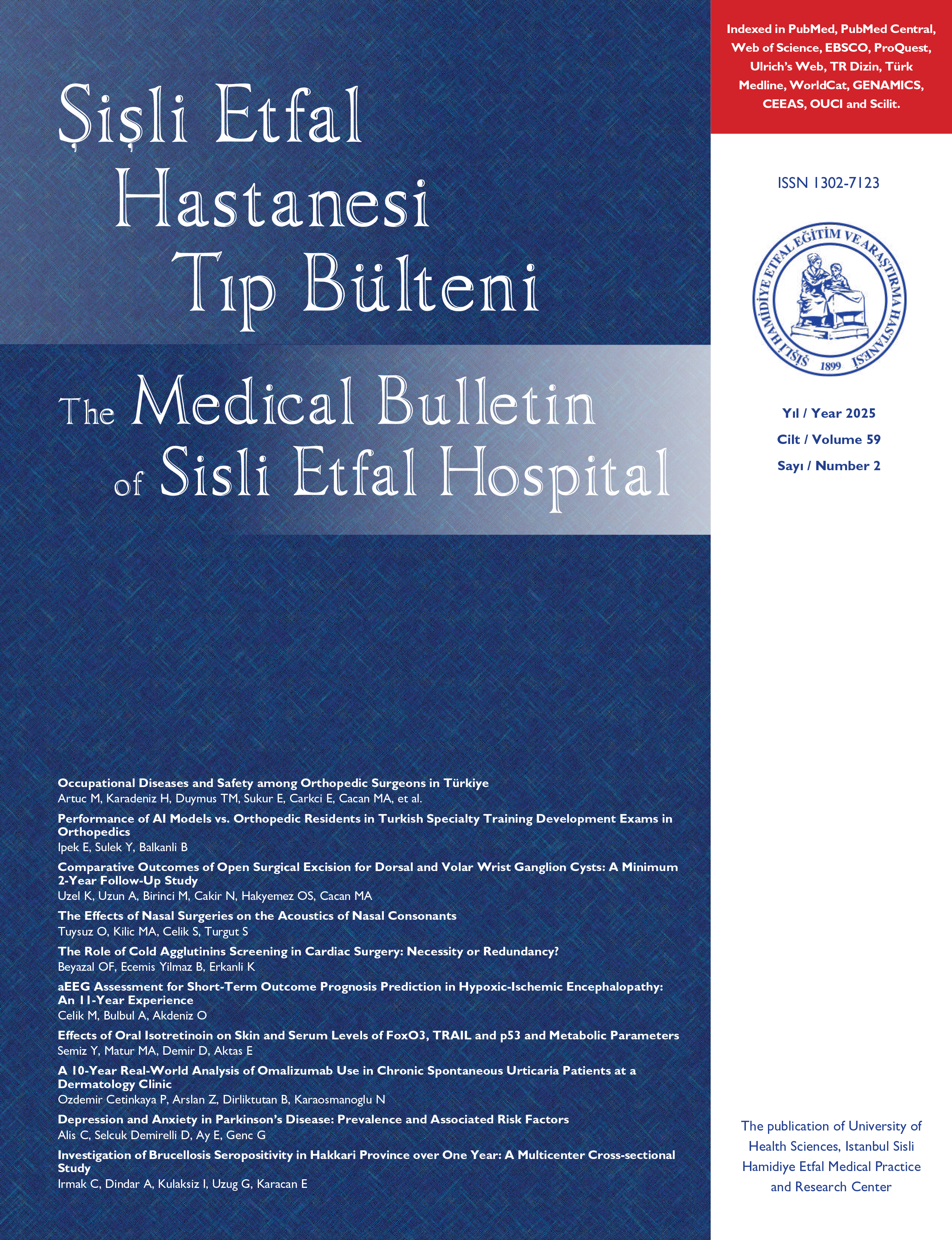
327 Meme Kanserli Hastanın Retrospektif Analizi
Didem Karaçetin, Ahmet Uyanoğlu, Alpaslan Mayadağlı, Özlem Maral, Oktay IncekaraŞişli Etfal Eğitim ve Araştırma Hastanesi, Radyasyon Onkolojisi Kliniği, İstanbulAmaç: Bu çalışmada meme kanserinde tedavi metodlarını ve sonuçlarını büyük ölçüde etkileyen prognostik faktörler değerlendirildi.
Materyal ve Metod: 1987-1995 yılları arasında Şişli Etfal Eğitim ve Araştırma Hastanesi Radyasyon Onkolojisi Kliniğine meme Ca tanısı alarak başvuran, tedavi uygulanan ve bir yıldan uzun takibi olan 327 hasta yaş dağılımlarına, histolojik tiplerine, evrelerine, yerleşim yerlerine, aksiller lenfnodu tutulumuna, tümör büyüklüğüne göre incelenmiştir.
Bulgular: Hastaların yaş gruplarına göre dağılımında en sık 35-50 yaş grubu (%44) ve sonra 51-65 yaş grubu (%36) gözlenmiştir. Menopoz durumlarına göre %52.3ü postmenopozedir. Histolojik sınıflandırmada en sık itıvaziv duktal Caya (%64.8) rastlanmıştır. Evrelere göre dağılımda evre 1 15 hasta, evre 2 188 hasta, evre 3 111 hasta, evre 4 9 hasta olarak saptanmıştır.
Sonuç: Meme kanserinde prognostik faktörler tedavi metodlarını saptamada önemlidir. En önemli prognostic faktörler arasında; aksiller lenf nodu tutulumu, tümör büyüklüğü, histolojik tip, hasta yaşı, steroid reseptör durumları sayılabilir.
Anahtar Kelimeler: Meme Ca, Prognostik faktörler
Retrospectif Analysis Of 327 Breast Cancer Patients
Didem Karaçetin, Ahmet Uyanoğlu, Alpaslan Mayadağlı, Özlem Maral, Oktay IncekaraDepartment of Radiation Oncology, Şişli Etfal Training and Research Hospital, Istanbul,TurkeyObjective: In this study we have evaluated prognostic fact which is the most important to choose treatment metho sürvival.
Study Design: The period of 1987-1995, 327 breast can patients, who followed up more than 1 years in Şişli E Hospital Radiation Oncology clinic have been evaluated their age group, histologic status, tumor size, tumor site t axiller lymph node status.
Result: For their age groups; 44% of patients in 35-50 groups, 36% of patients in 51-65 age groups. Invaziv ductal carcinoma is the most common histologic type (64.8 Stage 1;15 patients, stage 2; 188 patients, stage 3;111 path and stage 4;9 patients have been followed
Conclusion: Prognostic factors are important to detern treatment methods. The most important prognostic faci are axiller lyphmnode status, histologic type, patients age, tumor size and site and steroid receptor status
Keywords: Breast Cancer, Prognostic Fact
Makale Dili: Türkçe



















